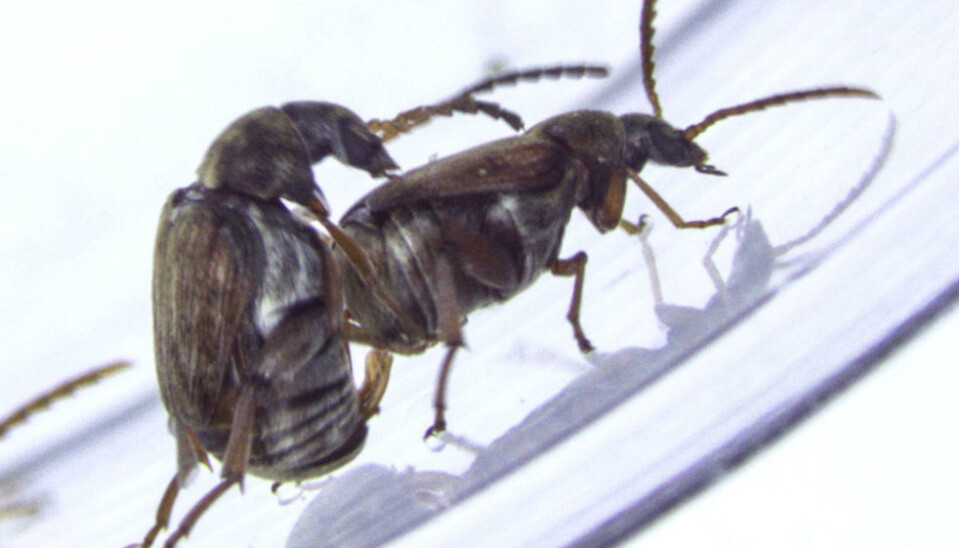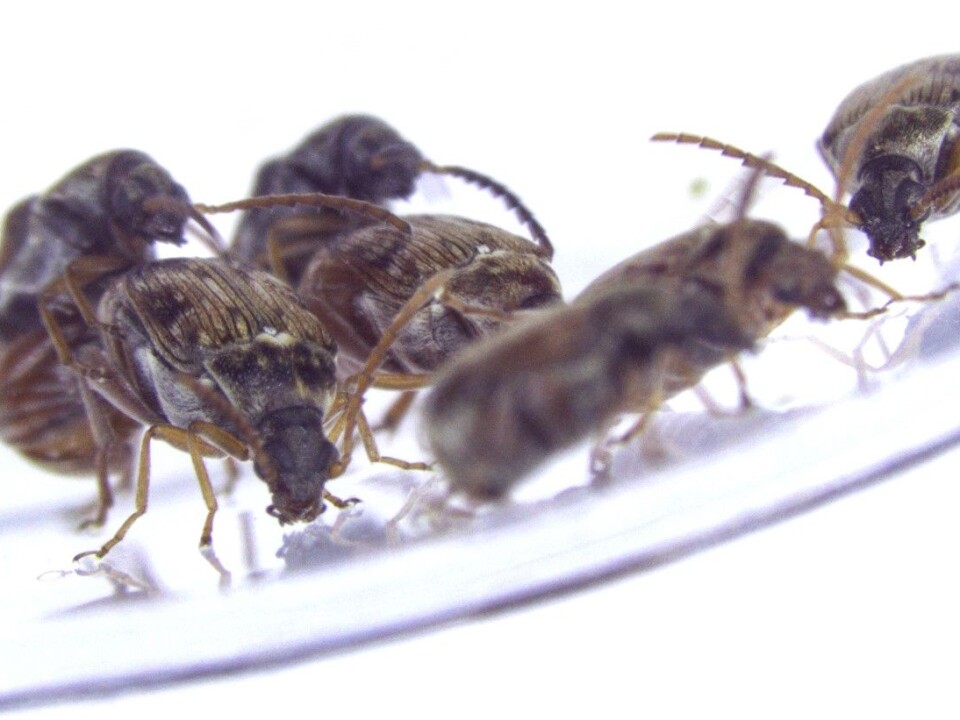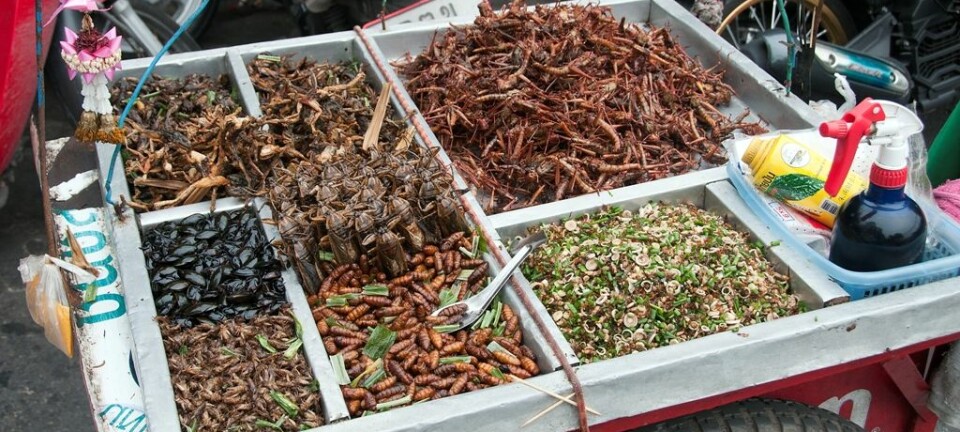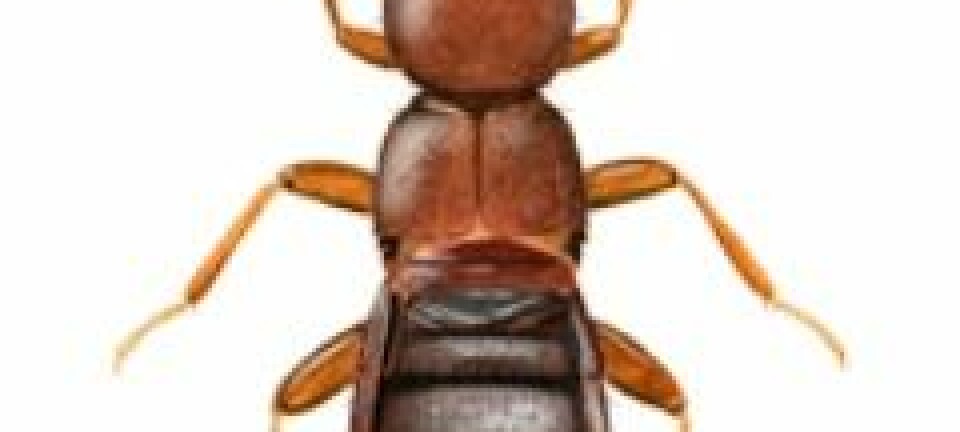
Gay beetles get fertile sisters
Beetle study explains why same-sex sexual behaviours may be good for evolution.
From an evolutionary perspective, courting the same sex doesn’t make obvious sense. Courtship rituals between the sexes, in the form of dances, competition and other flirtatious displays, leads to mating, which leads to new offspring. And in this way genes get passed on.
But what about animals courting the same sex? The animals spend time and energy on flirting, but their genes don’t go anywhere. Yet numerous examples of same-sex sexual behaviour exist in the animal kingdom. Why?
Clearly, it's not exactly an easy question to answer, and the hypotheses are numerous. But researchers at Uppsala University have recently published their contribution to the discussion.
The researchers, including David Berger, studied why some beetles flirt and mate with the same sex.
A case of mistaken identity

The prevailing explanation for this behaviour among insects is that males simply don’t distinguish between other males and females, writes The Independent. In a larger study of around 110 different insect and spider species, the researchers concluded that the insects had simply misidentified their mate.
The researchers behind the study believe males approach other males because they’re not willing to risk a lost opportunity. So it pays to try once too often rather than once too little.
But Berger and his colleagues believe the explanation lies in the world of genetics.
Flirtatious male beetles had fertile sister beetles
Berger started with a group of beetles and bred the ones that had the greatest tendency to approach beetles of the same sex.

Important to note is that these beetles approached both male beetles and female beetles.
After several generations, Berger had managed to breed male beetles that approached other males more often. But the breeding apparently also had an effect on the beetle's sisters. “We saw that these males’ sisters laid more eggs and produced more offspring than before,” says Berger in a press release from the university.
Genetic compromise
So, to understand the conclusions that researchers draw from this effect, a little genetics refresher could be useful.
Most of us are familiar with DNA: long coding strands in our cells that determine almost everything about who we are and what we look like. A gene is a section of DNA that contains specific information, e.g. about what hair colour you have.
But there are different hair colours. That's because one gene can come in several varieties, or alleles. In addition, genes influence several seemingly unrelated traits. This is called pleiotropy.
“Genes can have multiple functions. It's actually pretty rare for genes to affect only one trait," Kirkendall tells forskning.no.
Kirkendall is a professor in the Department of Biology at the University of Bergen. He has done research on evolution, reproduction and insects.
He explains that genes that are passed on because they provide benefits can also have a detrimental effect on other traits.
For example, genes that control the length of a bird's beak also control its width. Having a long beak is beneficial for the bird, but a wide beak can be disadvantageous. So finding a compromise between the positive and negative characteristics that genes provide is key.
Same genes, different effects
Berger and his colleagues speculate whether certain genes in male beetles engender same-sex sexual behaviours, whereas in female beetles the some of the same genes probably have an effect on their reproductive traits.
The researchers believe that some genes express themselves quite differently in male and female beetles. Because these genes provide great advantages for the female beetle, they are passed on to the next generation, which can explain how this form of homosexual behaviour also continues in the males.
Berger's study is not the only one that deals with homosexuality among insects. forskning.no has previously written about how genetically engineered fruit flies can become homosexual when the temperature gets warmer. And when the temperature drops, the flies go back to being heterosexual.
Doesn’t explain homosexuality
Kirkendall still has a few reservations that he feels are important to mention.
“We’re reasonably sure that there are some genes that influence this behaviour. But what we’re not sure about is whether the same genes affect females and males. When you breed for certain genes, the frequency of the neighbouring genes also increases,” he says.
So it may not be exactly the same genes that result in same-sex flirting among male beetles and that provide greater reproduction in female beetles.
In addition, the researchers behind the study stress that the findings cannot be extrapolated directly either to humans or to other animal species, writes The Independent.
“People are completely different because we’re social animals, and other things come into the picture. These beetles don’t have the same social behaviour,” says Kirkendall.
When forskning.no previously wrote about homosexuality as a genetic trait, zoologist Petter Bøckman at the Natural History Museum in Oslo emphasized that scientists still know very little about this field.
“In some species, homosexuality appears to be random, but in others it’s a natural part of the social repertoire,” he said.
Bøckman pointed out that it’s unlikely that one gene causes homosexuality.
“There are lots of ways to be gay, and homosexuality isn’t just one trait. Probably there are many different biological explanations,” said Bøckman.
------------------------------------------------
Read the Norwegian version of this article at forskning.no
Scientific links
- Berger, D. (et. al.) Sexually antagonistic selection on genetic variation underlying both male and female same-sex sexual behavior. BMC Evolutionary biology (2016).
- Bailey, N.W. og Zuk, M. Same-sex sexual behavior and evolution. Cell press (2009) [pdf.]
- Scharf, I. og Martin, O.Y. Same-sex sexual behavior in insects and arachnids: prevalence, causes, and consequences. Behavioral Ecology and Sociobiology (2013) (Summary.)







